A Day in Brighton
Wandering through the quirky, colourful, diverse, and fun British seaside city
Brighton, East Sussex is an English city along the coast of the English Channel. It is known for its diverse population, fashionable and off-beat shopping, laid back and sometimes eccentric attitude, cultural attractions, and the sea. I have visited the city a few times and never tire of wandering through the city and along the seaside.
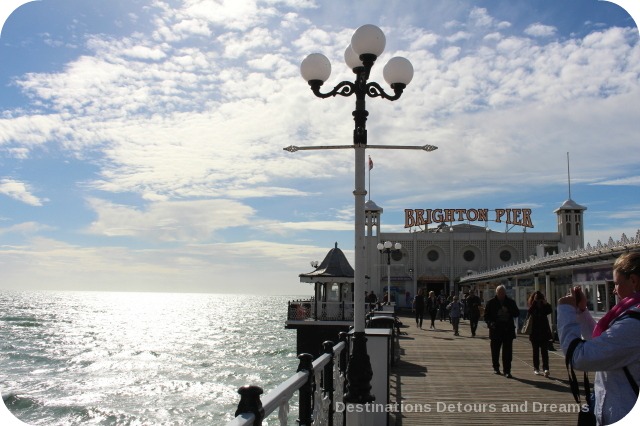
The smell of fish and chips greets me as I walk onto Brighton Pier past several restaurants and food stalls. Farther out on the pier, the smell fades and arcade sounds are heard. Brighton Marine Palace and Pier, generally known as Palace Pier and informally renamed as Brighton Pier, is Brighton’s third pier. Work began on the 1,760 foot pier in 1891 and the pier opened in 1899.
Brighton’s first pier was Chain Pier, built in 1822 to 1823. Brighton did not have a natural harbour and it needed a landing stage so people did not need to board boats and rafts to get onto channel-crossing vessels. The Chain Pier quickly became a popular attraction, with people marveling at its huge chains and towers or thrilled to be walking over the sea. I was also told people may have appreciated the fresh air as they walked farther out on the pier. In those days, sewage drained mostly into cesspools behind buildings. The smell cannot have been pleasant. The owners recognized commercial potential. They built kiosks selling souvenirs and confectioneries, and entertainment stalls. They began charging an entry fee. At the height of its popularity in the 1820s and 1830s, up to 4,000 people a day went onto the pier, often entertained by regimental bands.
Brighton became the busiest cross-channel port, but the difficulty of landing in bad weather made Newhaven more attractive. After 1847, when the railway went to Newhaven, few ships sailed from Brighton. The pier suffered irreparable damages from many storms between 1824 and 1834 and was completely destroyed by a storm in 1889.
West Pier was built in 1866 as a pleasure pier. The pier had ornamental houses, gas lamps with ornamental serpent designs, and glass screens at the pierhead to protect visitors from the weather. The 19th century bandstand was demolished between 1914 and 1916 and replaced with a grand concert hall. The pier was closed in 1975. It suffered structural damage in a 1987 storm and access from the shore was removed for safety reasons. The remaining pier partially collapsed in a storm in 2002 and the pierhead burned in a 2003 fire.
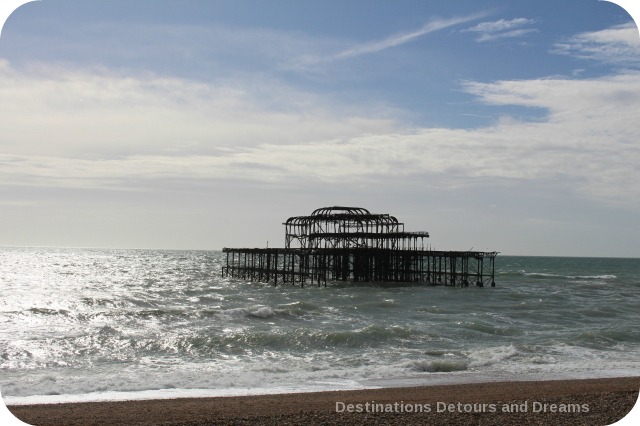
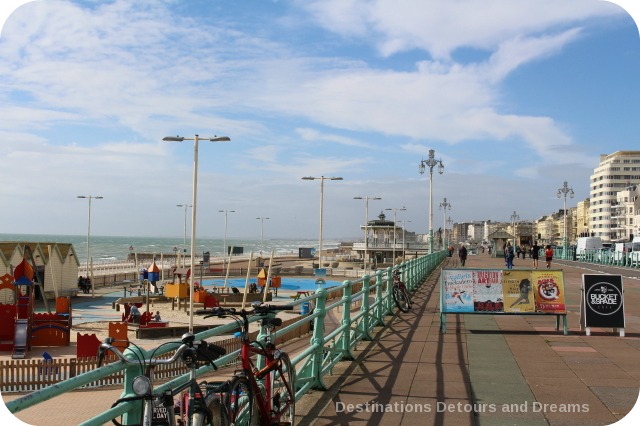
with lots of cafes and bars to rest at
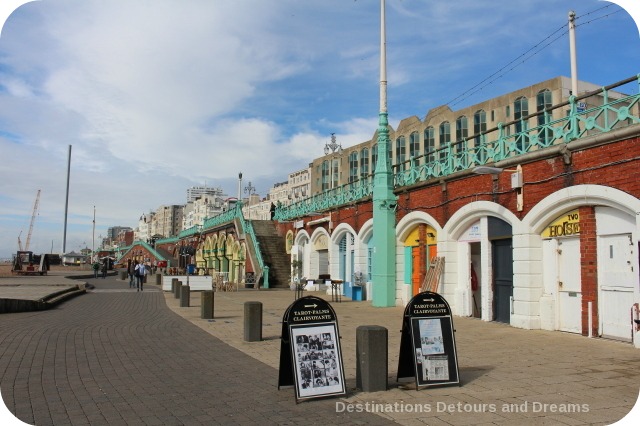
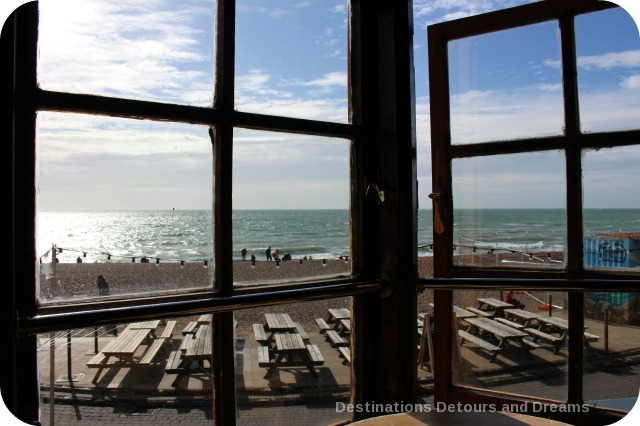
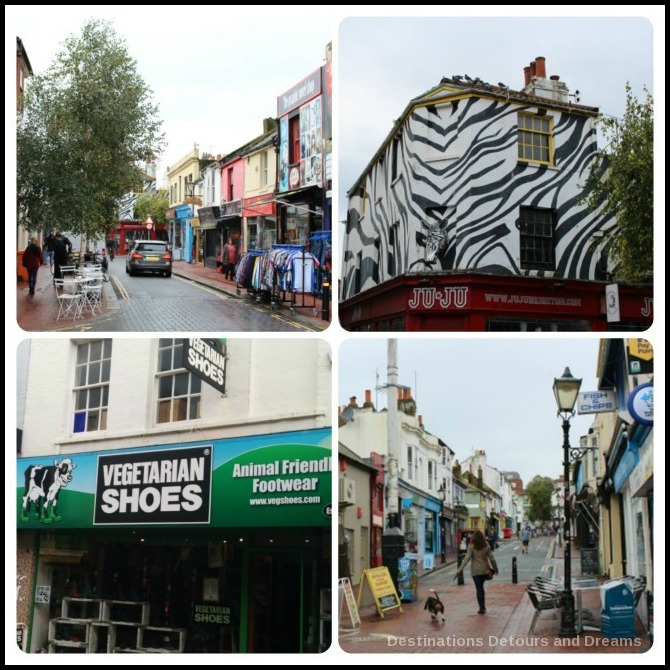
The Brighton North Laine shopping area is the heart of the city’s cultural quarter. It is the place to go for retro chic, funky items, and locally made jewelry, sculpture, ceramics, painting, and metalwork. It is home to one of the largest sections of independent retailers on the south coast.
Just south of North Laine is the Lanes historic quarter. This maze of twisty alleyways offers antiques, jewelry, designer fashion, quaint shops, restaurants, and buskers.
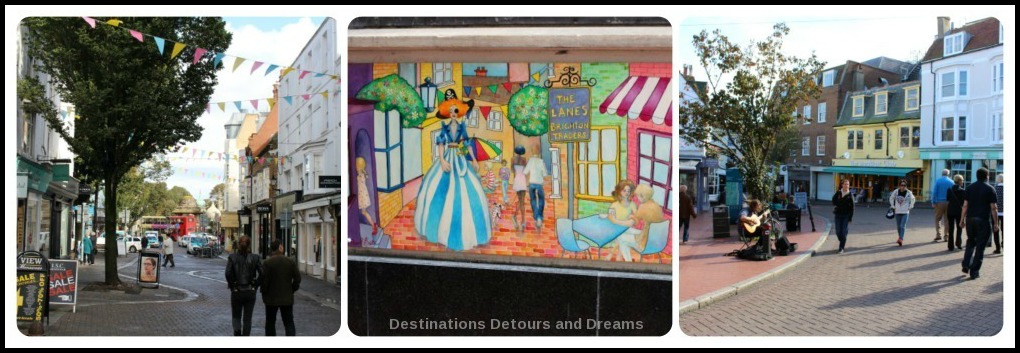
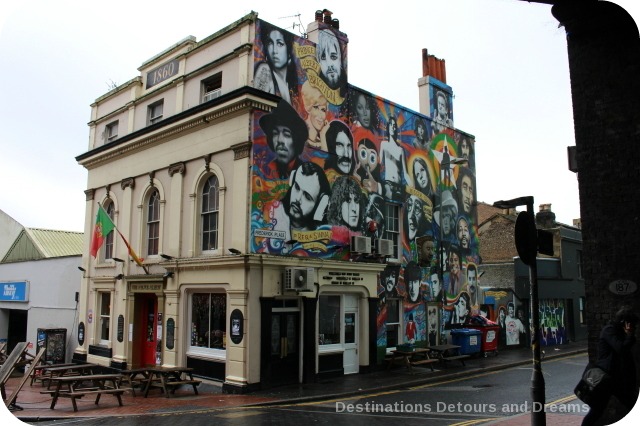
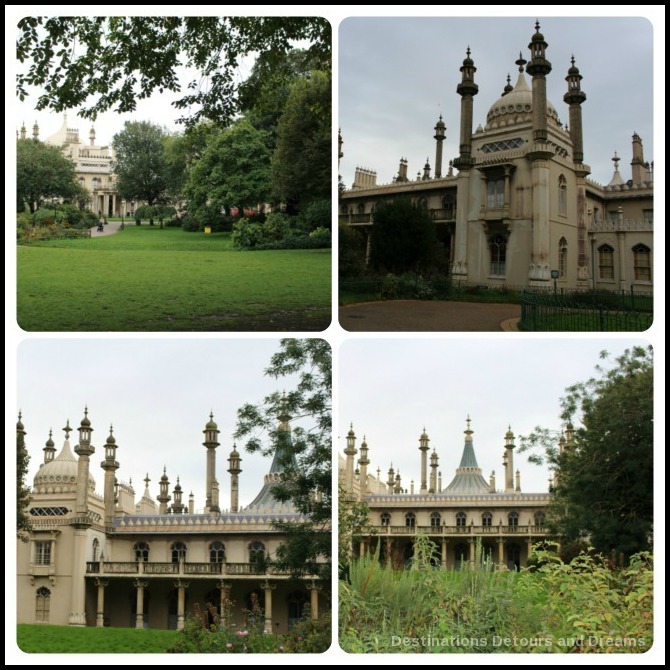
One of the more eccentric attractions is the Royal Pavilion, also known as the Brighton Pavilion. Its exotic looks seem to belong in the Orient, not in an English coastal town. It was the seaside pleasure home of Prince Regent (George IV), who was fascinated with the Orient. George was an extravagant man with a decadent lifestyle. He came to Brighton on the advice of his physicians to benefit from the climate and sea water treatments. In 1787 he hired architect Henry Holland to transform his lodging house into a modest villa. The villa was not suitable for entertaining and large social events. When he became Prince Regent in 1811 he commissioned John Nash to change the villa into the place we see today.
The Palace was near the home of his mistress, the widowed Mrs. Fitzherbert. George and Maria Fitzherbert actually married in a secret ceremony. The marriage was done in secret because it was invalid under British law. Mrs. Fitzherbert was Catholic. A law in effect at the time stated that any heir to the throne who married a Roman Catholic would lose their place in the succession. Also, the Marriage Act of 1772 required that the King’s consent had to be obtained before any of his children could marry. Legal or not, Mrs. Fitzherbert was treated as a queen in Brighton.
After George’s death, the Pavilion became the property of his younger brother, William IV, and later his niece Queen Victoria. Queen Victoria sold the Pavilion to the city of Brighton in 1850. Thinking the place would be demolished, she stripped it of its interior decorations and furnishings. Instead the city chose to restore the palace. Queen Victoria returned many of the items in 1864 (chandeliers, wall paintings). The Royal Pavilion was used as a hospital during World War I. In the 1920s a programme of restoration began. Queen Mary returned original decorations, including furniture from Buckingham Palace. Today the restored Pavilion, complete with those original pieces of furniture and works of art, operates as a museum.
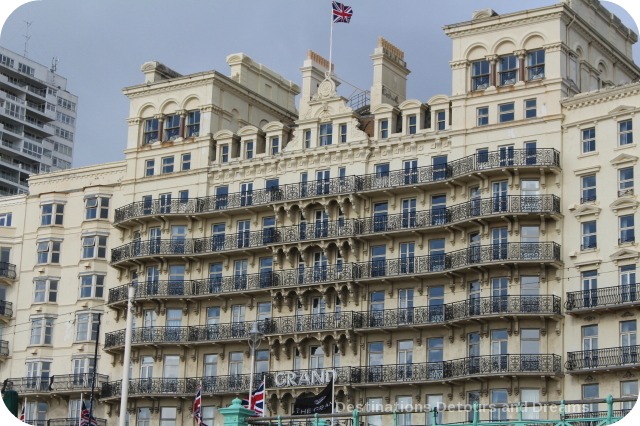
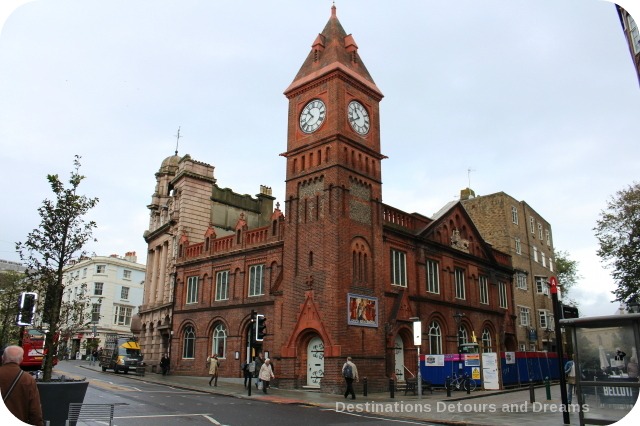
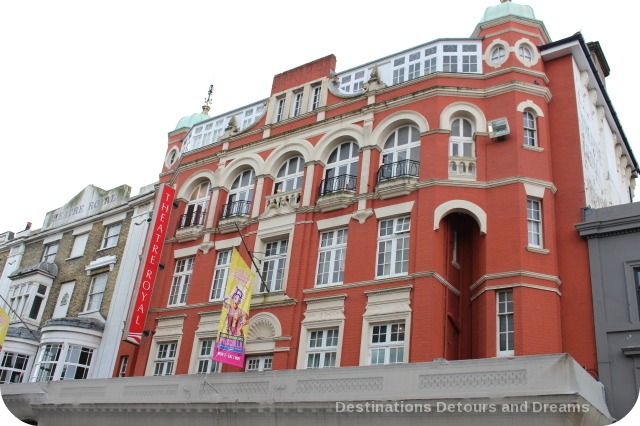
Brighton has a lively cultural life, with theatre, dance, comedy, and music events. There is a lively music and club dance scene. Many pubs offer regular entertainment in a variety of genres. There are a variety of water sports available. Cycling is popular. There are art galleries to peruse through and museums to explore. Or you could take one of the themed city tours. My favourite thing remains wandering leisurely through the city.
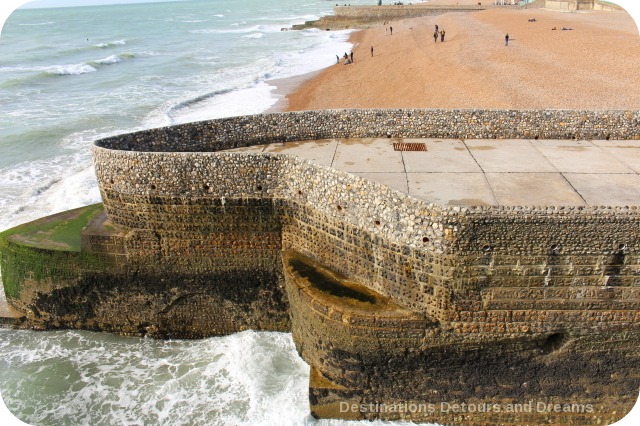
(A groyne is a narrow structure built at right angles to the coast to capture and retain beach material, enabling development of a beach.)
If you enjoyed this post, sign up for Destinations Detours and Dreams monthly e-newsletter. Get behind the scenes information and sneak peeks ahead in addition to a recap of the month’s posts.
PIN IT
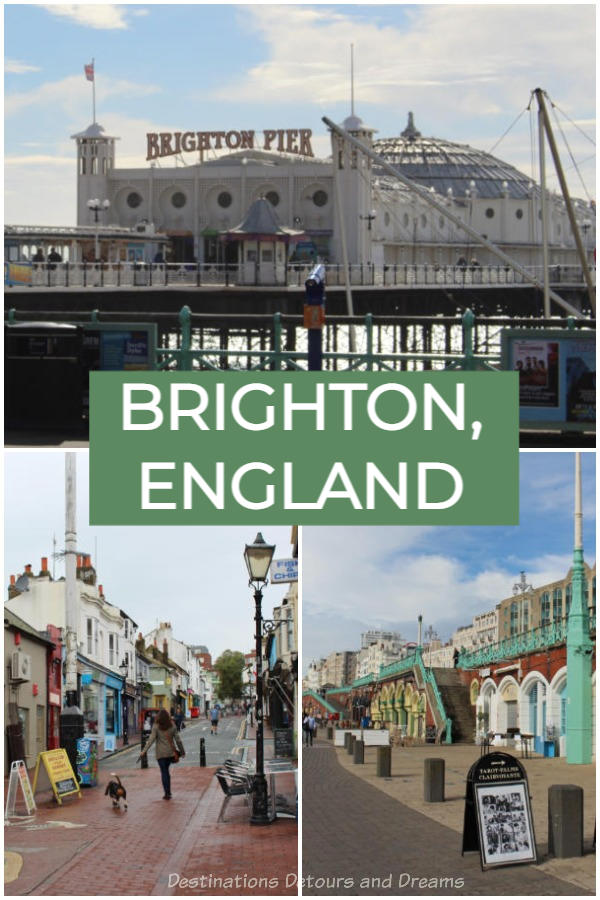

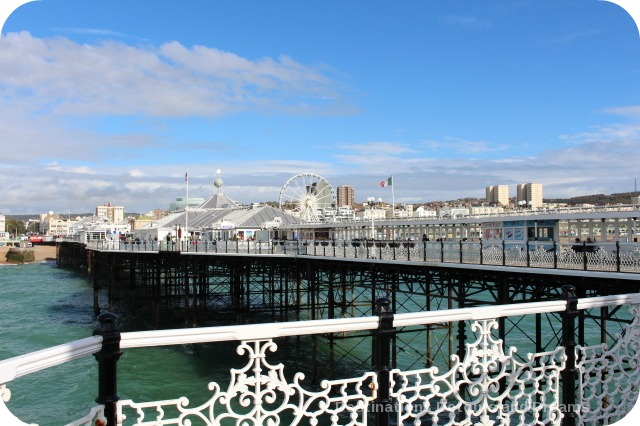
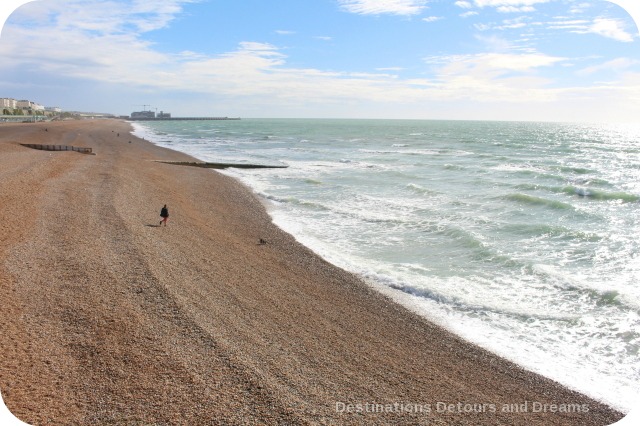
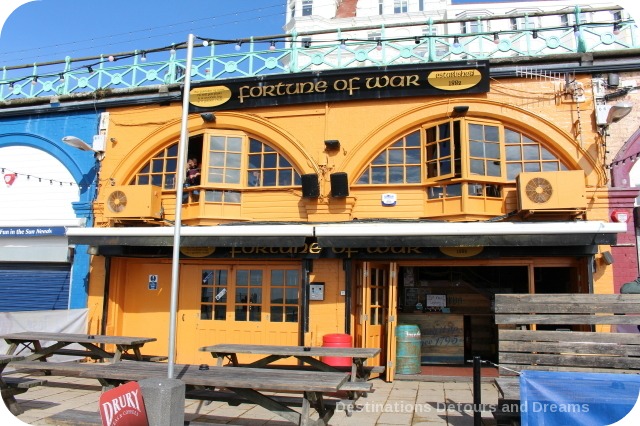
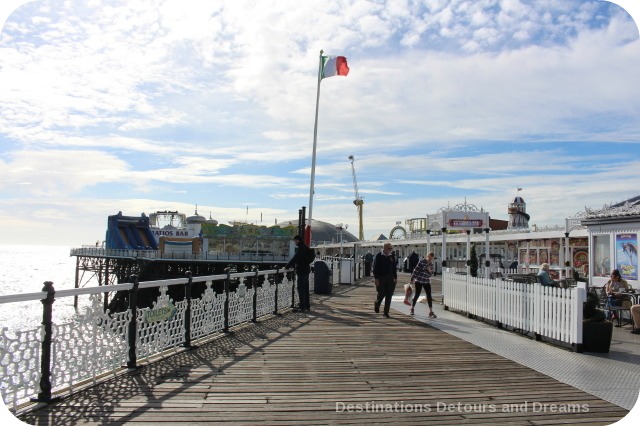
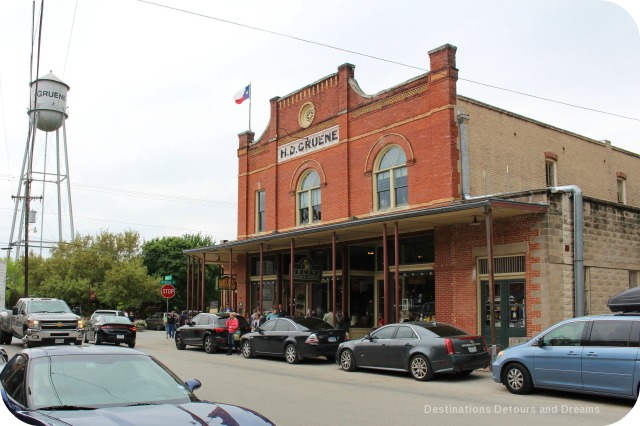
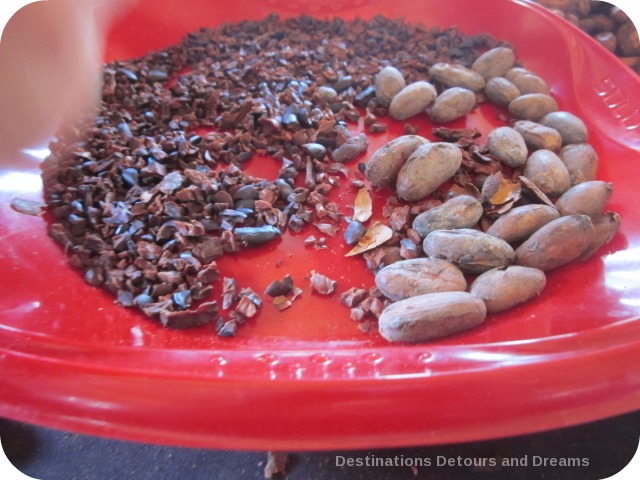
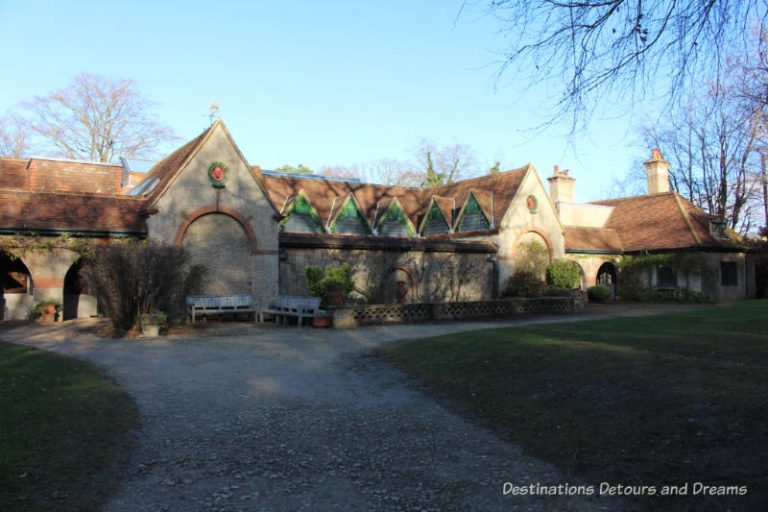
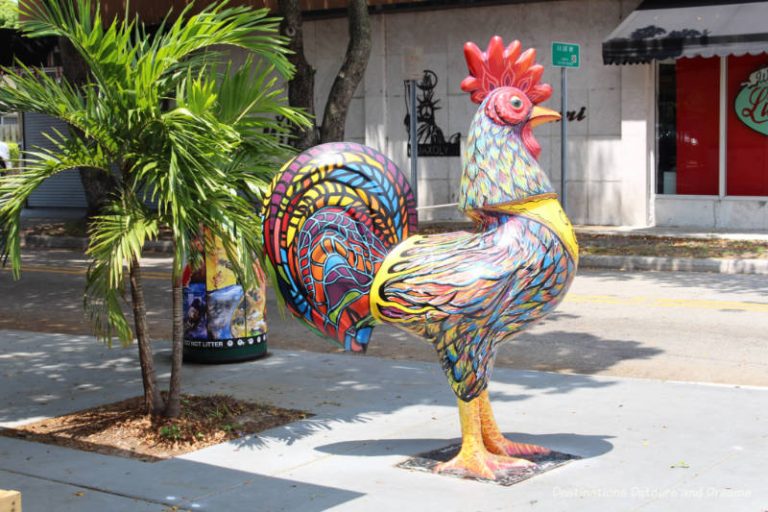
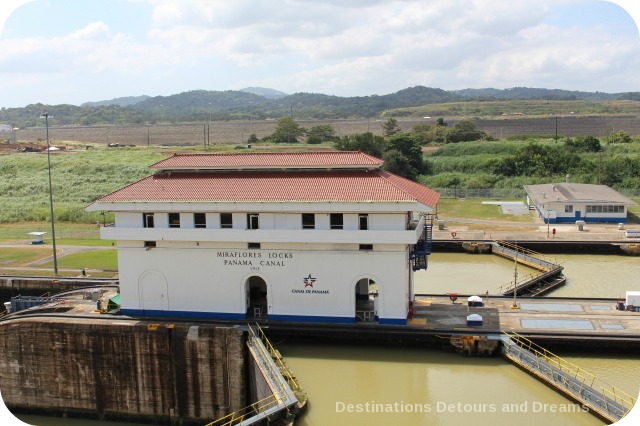
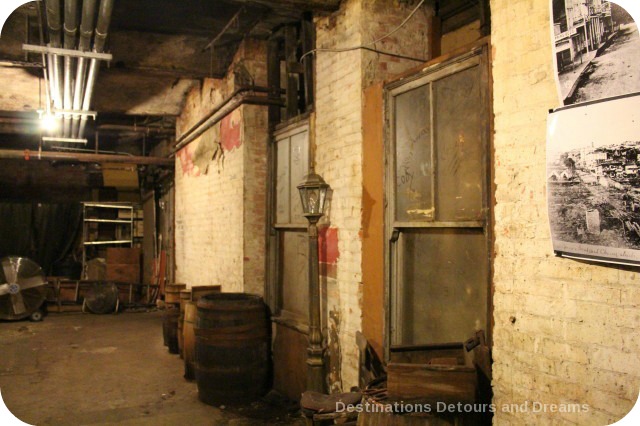
Brighton looks like a great place to sight-see, learn some history and just relax at the seashore. I’d love to see the restored Royal Pavilion as well as the original furnishings that have been returned. It looks like there’s plenty to do and see during a visit to this beautiful city. Anita
Anita, although I have visited Brighton a number of times, I have never made inside the Royal Pavilion. Each time I visit I say this time I will, but then get sidetracked enjoying the rest of the city and don’t.
Ah, I wanted to visit Brighton the last time I was in London, but couldn’t make it work. Your post has me kicking myself (again). Next time …
Deb, I think Brighton is worth a visit if you can fit it in on your next trip to England.
Ah…I never did make it to Brighton! Now I am sorrier than ever that I missed it. Next time, I won’t make the same mistake:) Great pictures Donna!
Thanks Jacquie. I think you’d enjoy Brighton.
Even though we lived in England (Wiltshire) for a year, we never made it to Brighton. Your recital of its history and photos remind me of the Atlantic City boardwalk—-minus the 18th century palace.
Suzanne, it’s interesting that this post reminded you of the Atlantic City boardwalk. I’ve not been there, but maybe someday.
Such beautiful pictures of Brighton. So sunny and crisp. I want to be there 🙂 Maybe it’s because the sun is very stingy with its presence in my neck of the woods this time of year.
Jeri, we were fortunate to visit on a beautiful day. The sun doesn’t always sun in Brighton – this is England, after all. I think the sun may be stingy there right now too – according to online weather reports, it’s rainy there for most of this week.
That is a stange sight to see – an Asian inspired building there. :). Guess he knew what he liked. It does look like a magnificent building and would be fun to see just because it seems so
Out of place.
Susan, the Pavilion does seem out of place, but in some strange way it also belongs – Brighton is colourful, diverse, and a bit eccentric.
A great blog-tour of Brighton…this is wonderful.
Thanks Rose Mary.
I have never made it to Brighton, but your photos certainly make me want to go, Donna! I love the pic of the street art! And I hear there is a Chocolate Boutique Hotel there, so Brighton has been on my radar for awhile now. Not sure when I’ll get there, but thanks for all the info.
Doreen, I did not know there was a Chocolate Boutique Hotel in Brighton. I’ll have to hunt it out next time I visit. Hope you get a chance to see it soon.
Brighton looks like it would be a great place to visit. I love going anywhere that has a pier. And I love the mural on the side of the building and all the art work. Brighton definitely seems to have a creative culture which would make for a fun trip.
Erica, Brighton definitely has a creative culture.
Wonderful post Donna. I naturally gravitate to places by the sea, and Brighton looks like an enchanting city to escape to or seek adventures.Thanks for sharing.
Thanks Tatia. I’m glad you enjoyed my look at Brighton.